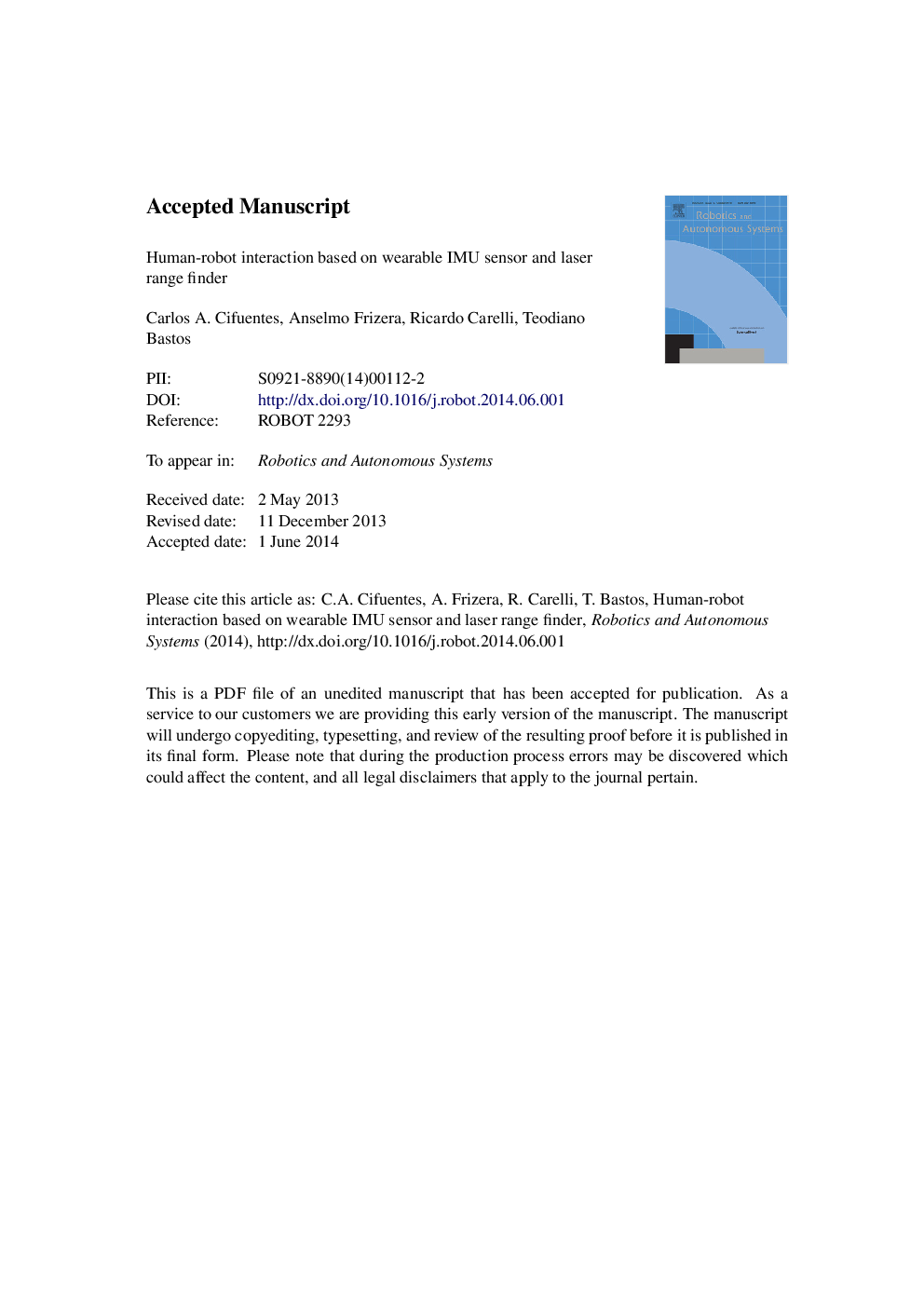| Article ID | Journal | Published Year | Pages | File Type |
|---|---|---|---|---|
| 10326777 | Robotics and Autonomous Systems | 2014 | 30 Pages |
Abstract
Service robots are not only expected to navigate within the environment, as they also will may with people. Human tracking by mobile robots is essential for service robots and human interaction applications. In this work, the goal is to add a more natural robot-human following in front based on the normal human gait model. This approach proposes implementing and evaluating a human-robot interaction strategy, using the integration of a LRF (Laser Range Finder) tracking of human legs with wearable IMU (Inertial Measurement Unit) sensors for capturing the human movement during the gait. The work was carried out in four stages: first, the definition of the model of human-robot interaction and the control proposal were developed. Second, the parameters based on the human gait were estimated. Third, the robot and sensor integration setup are also proposed. Finally, the description of the algorithm for parameters detection is presented. In the experimental study, despite of the continuous oscillation during the walking, the parameters estimation was precise and unbiased, showing also repeatability with human linear velocities changes. The controller was evaluated with an eight-shaped curve, showing the stability of the controller even with sharp changes in the human path during real experiments.
Related Topics
Physical Sciences and Engineering
Computer Science
Artificial Intelligence
Authors
Carlos A. Cifuentes, Anselmo Frizera, Ricardo Carelli, Teodiano Bastos,
